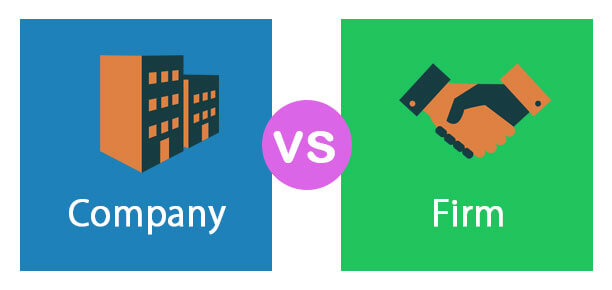Firms: Definition in Business, How They Work, and Types – JavaTpoint
← prev
Mục Lục
Firms: Definition in Business, How They Work, and Types
What is a Firm?
A firm is a for-profit business entity that offers professional services. It can represent any corporate body, Limited Liability Company (LLC), or partnership. A company is free to do business with any client or supplier. Most firms typically have one location. On the other hand, a business firm usually comprises one or more physical locations owned by the same person and typically uses the same Employer Identification Number (EIN).

The term “firm”, when used in a title, is frequently connected to companies that offer expert legal and accounting services. Still, it may also refer to many other companies, including consulting, marketing, and graphical design firms.
The Concept behind the Firms
The company’s theory in microeconomics aims to explain why businesses exist, how they function and produce, and how they are organized. According to the theory of the firm, businesses exist to maximize profits, although this theory evolves in response to changes in the economic environment. Modern ideas distinguish between businesses that try to achieve high amounts of profit quickly and those that work toward long-term sustainability.
Firm vs Company
There is a distinction between a firm and a company, although they seem interchangeable and are frequently used as synonyms. Any trade or business offering products or services to generate revenue might be considered a company. Additionally, it covers all business entities, including sole proprietorships, partnerships, and corporations. On the other hand, a firm often refers to a for-profit business controlled by two or more partners offering professional services, such as a legal firm, and normally excludes the sole proprietorship business. A firm may occasionally be a corporation.

Types of Firms
Business operations are normally carried out in a firm’s name. Still, the level of legal protection-for owners or employees-depends on the ownership structure used to establish the respective firm. Some organizations kinds offer more legal protection than others, such as corporations. The idea of a mature, well-established firm already exists. Based on their ownership structures, firms can fit into a wide range of categories:
1. Sole Proprietorship or Sole Trader
One individual owns a sole proprietorship or sole trader and is responsible for all liabilities and financial commitments. Certain sole proprietorship enterprises function like firms. However, they are uncommon.
2. Partnership
A partnership is a business that two or more persons hold; the number of partners who can share ownership is unlimited. The partners of a partnership share ownership of the business assets and are jointly responsible for any financial responsibilities.
3. Corporation
The business’s and the owners’ financials are kept apart in a corporation. A corporation’s owners are not responsible for any expenses, legal fees, or other debts incurred by the business. Governments or private persons may own corporations. Even though they are legal business bodies, corporations may behave like people. For instance, they could sign contracts, borrow money, and pay taxes. A corporation is frequently used to refer to an organization with many owners.
4. Financial Cooperative
A financial cooperative, like a corporation, has limited liability for its owners, but its investors have a vote in the company’s management.
Resources Used by Firms
A firm’s primary goal is to turn inputs into outputs. Because of this, firms often develop goods, services, and offerings for customers using various resources. These resources might consist of, but not be limited to:
1. Natural Resources
Natural resources are frequently used by businesses that sell items to construct the inventory and commodities that will ultimately be turned into completed goods. These resources can be obtained from a third party or the source.
2. Capital Resources
Purchasing the tools and real estate needed for business operations sometimes requires an upfront expenditure. Before the business becomes self-sustaining, there can also be continuing capital requirements. Although the long-term objective is to have these capital resources created through corporate activities, these capital resources may come from outside investors in the initial phases.
3. Human Resources
The lynchpin that keeps the underlying business running is the company’s workforce. People’s skills, networks, and time are all resources that a company may use to improve its market offers. Human resources are sometimes used to refer to a particular department. However, they are available to all departments within a corporation.
4. Entrepreneurship
Entrepreneurship uses information, skill, and common sense to turn an idea into a profitable enterprise. This involves utilizing commercial, legal, and entrepreneurial means to properly launch a product and guarantee that the market will accept the offering.
Activities of a Firm
There are three main areas into which a firm’s operations may be divided: business running activities, investment activities, and finance activities. These three categories are detailed below and listed on a firm’s cash flow statement:
Business Operating Activities
Operating activities are a company’s main component that appears first on a cash flow statement. This part relates to the company’s real or main business. These actions may include making sales of goods or paying out company charges. Most of these activities connect to the income statement since they frequently involve a business’s regular operations and income.
The operational activities part of a cash flow statement may occasionally be negative. The corporation is using/spending more money than it is getting in specifically for business operations if the number is negative. This implies that the business must rely on the other sectors to guarantee it receives enough cash to continue operating.
Investing Activities
Investing activities are long-term cashflow activities that a firm undertakes to prepare for the future and guarantee that it has the framework to grow operations. Examples are the construction of office buildings, purchasing heavy equipment, and other investment activities.
Even though they might not be necessary for day-to-day operations, investment activities are crucial to a company’s long-term development.
Think about a company that produces its products. The company will be more successful in its commercial operations if it invests in a strong production facility and corporate warehouse.
Financing Activities
Financial operations make up the final category of a company’s activity. Although they are also not often a part of a company’s daily operations, finance activities are crucial to its long-term financial stability.
Cash inflows and outflows are both types of finance operations. Companies could opt, for instance, to pay investors dividends financed by the company’s net profits. As an alternative, businesses can obtain capital by borrowing from lenders or selling shares to investors to fund ongoing operations.
Advantages of Firm
A corporation has several advantages and disadvantages, much like other economic entities. Some of the advantages include the following:
- The procedure for creating a corporate organization is often simple.
- The initial funding is often sizable since it comes from the pooled contributions of all the business members who are also shareholders.
- It offers a profit-sharing approach based on money paid up, comparable to an investment in stocks. The difference is that everyone who invests in the company has the right to actively participate in managing it.
- The clear division of duties at each organizational level improves the efficient management of business organizations.
- It is straightforward to obtain large capital loans thanks to the notarial deed (You only need to compare notary seals and stamps and select the most appropriate).
Disadvantages of Firm
- Each individual who makes up a corporate organization is individually responsible for its debts.
- There is no difference established between company assets and ownership rights.
- Since more than one person controls a firm, the potential for conflict is high.
- If your firm files for bankruptcy, your money can be confiscated to make up for the losses incurred by the company.
- The other members must cover the costs incurred by a firm member who incurs a loss or faces legal issues.
Next Topic
Forex Trading: A Beginner’s Guide, What is the Forex Market
← prev
next →















![Toni Kroos là ai? [ sự thật về tiểu sử đầy đủ Toni Kroos ]](https://evbn.org/wp-content/uploads/New-Project-6635-1671934592.jpg)


